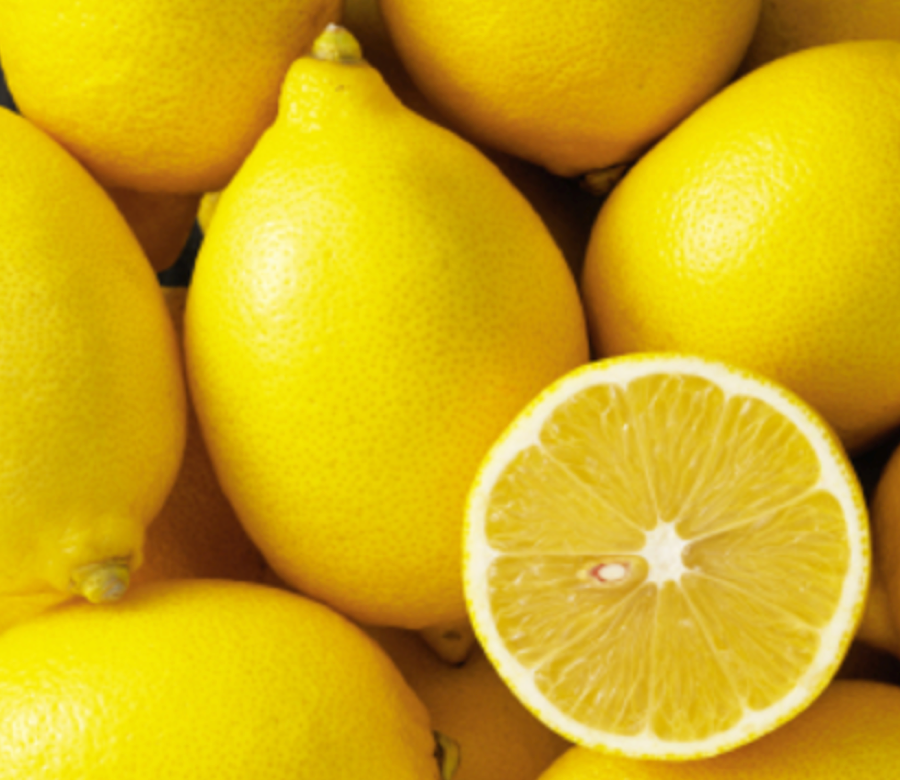
It’s summer, and that means it is time for lemonade. (Actually, I love lemonade, so all year long is lemonade time.) The problem is that lemonade is made with sugar, and more and more studies are suggesting that sugar is not only addictive but is a toxic poison. (Yeah, I know the words “addictive”, “toxic” and “poison” are strong, but I’m just referencing the words used in places such as here and here.) I even spoke about it last fall during the Jewish Holy Days and encouraged my community to begin taking their health more seriously. (Read it.) (According to one study on average, we now eat 130 pounds of sugar PER YEAR!)
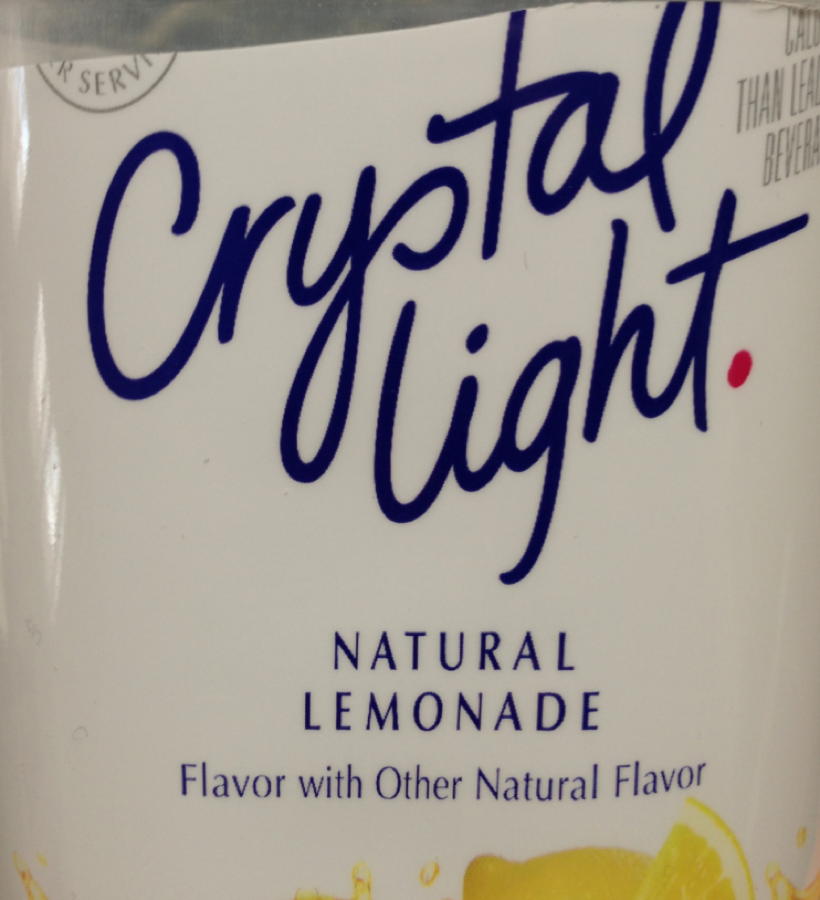
The problem is that I love sweet things, and I really do love lemonade. So when trying to cut down on my sugar intake, I turned to Crystal Light Lemonade. It is tasty, and the label even says “Natural Lemonade”. That’s all well and good, but have you ever actually LOOKED at the label? It lists chemical after chemical after chemical!
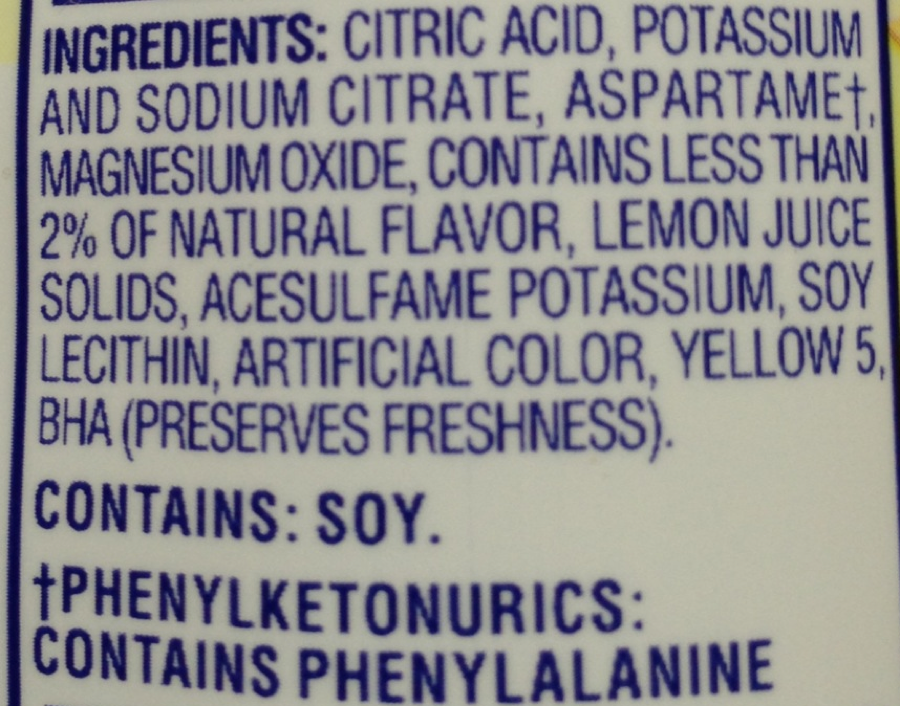
Seriously, the ingredients in beverages like Crystal Light look more like a laboratory research project than something anyone should consume. Still, for a couple of years I drank this stuff by the gallon. It was even a staple in my diet when I first went on South Beach and dropped a significant amount of weight.
Maybe it has something to do with seeing 50 looming before me in two years, but a few months back I decided I was done putting these chemicals into my body. I turned to water but, as great as a cold glass of water is on a hot day, I missed the lemonade. So Elana and I began experimenting. First we squeezed fresh lemons and limes, added some liquid stevia to taste and enjoyed. It was tasty, but it was also a good bit of work each time I wanted to make a new pitcher of lemonade — and the liquid stevia Elana uses is pricey.
So we experimented a little more, tried different brands of lemon juice and powdered stevia, and we finally came up with a recipe that is quick, tastes the same each time we make a pitcher, is fairly inexpensive, and, perhaps most importantly, tastes great.
What do we do? We take half of a 10 oz bottle of Santa Cruz Organic 100 Percent Lemon Juice, mix in 1/2 tsp of Trader Joe’s Powdered Stevia Extract, add filtered water (we have a reverse osmosis system), and mix the concoction. It takes no more time than mixing a batch of Crystal Light and, unlike the chemical drink, it’s healthy.
A 10 oz bottle of Santa Cruz Organic 100 Percent Lemon Juice is about $5. Buy it.
A 2 pack of Trader Joe’s Stevia Extract is $24.99 Buy it.
That means each half-gallon pitcher of lemonade is about $2.60. And if you make the lemonade weaker, then the price obviously goes down. It is fast, delicious and healthy. Summer is practically here; give it a try!

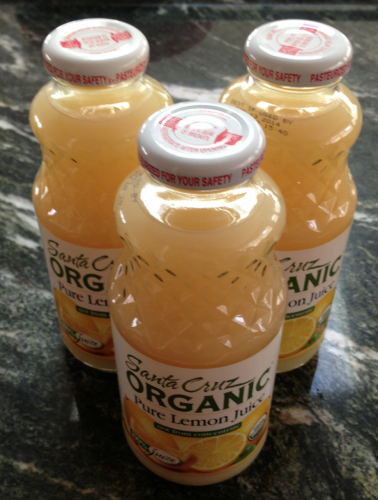
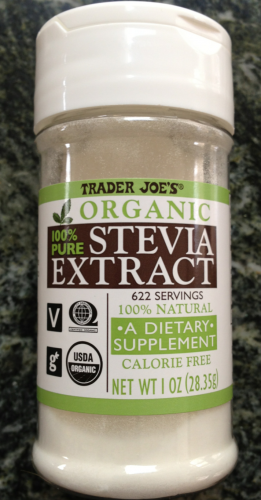
Looks yummy! Sarah has made something similar with seltzer water…she calls it her “mocktail”.
Good reminder as it gets warmer that there’s plenty of delicious and healthy non-water options! We’re equally guilty of reaching for the Crystal Lite sometimes, even if it is a chemical soup…
“We’re equally guilty of reaching for the Crystal Lite sometimes, even if it is a chemical soup…”
If it makes you feel any better, lemonade is also a chemical soup. The factory for its chemical components just happens to be outside 🙂
Touché!
—
Sent from my thumbs.
Wait … It’s summer?!? I was happy to see 50 degrees today, but summer is a ways off :$
It was warm enough to ditch my jacket and wear a t shirt…good enough for me! —
Sent from my thumbs.
Yeah… I went running in shorts and a t-shirt today. That defjnity qualifies as summer lemonade time. —
Sent from Mailbox for iPhone
I ran in snow flurries yesterday, and will be again by Tuesday … This is just a tease …
But love the lemonade idea!
It was 85 here today; that’s practically summer! 😉
I do something similar, but I add 1/2 Tetley’s decaffeinated tea that has been brewed in the microwave to the mixture; I believe it’s called an Arnold Palmer? I just know it is delicious! =)
In case anybody is curious what all those items on that scary label are for:
Citric acid: gives the drink its tart flavor. Also found in citrus (like in lemons), the original source. Now produced using microbes, just like insulin.
Sodium citrate: more citric acid. Tastes different from pure citric acid.
Potassium citrate: even more citric acid. Tastes different from the previous two forms. Sour flavors are complex!
Aspartame: the (in)famous sweetener. It’s a combination involving two amino acids that are naturally produced by, among other things, the human body.
Magnesium oxide: prevents the mix powder from clumping. edamame, pumpkin seeds, nuts, and dark chocolate all have lots of this (obviously not a clumping issue). Magnesium is an important mineral for your body, but cannot be absorbed in it pure form.
Acesulfame potassium: another artificial sweetener. Artificial sweeteners are often blended together to taste more like sugar. Personally I’d rather just have the sugar!
Soy lecithin: a fatty compound that helps the mix powder dissolve in water. Extracted from soy beans (hence the name).
Artificial color: …I think this one is self-evident. I think they didn’t include Yellow 5 (aka tartrazine) in here because more people are allergic to that one and want people to know it’s in there.
BHA: aka butylated hydroxyanisole. An antioxidant, to help keep the lecithin from going rancid, as fats tend to do over time.
The warning at the bottom: one thing that aspartame breaks down into is the amino acid phenylalanine. This is toxic to folks with phenylketonuria, an uncommon genetic disorder.
“Personally I’d rather just have sugar!
Two awesome comments on one post! Awesome.
So here’s what’s in my lemonade…
Lemon juice- From a tree known as the lemon tree
Stevia powder- ground powdered leaves from a plant known as the stevia plant
Water- from… water… aka the wet stuff in lakes, rain and your bathtub
Now I ask you… why would anyone opt to drink stuff that requires a biochemist’s degree or loopyduck (one and the same??) when it is just as quick to mix up a batch of this stuff?? (That was, of course, rhetorical.) I honestly wish I could undo the GALLONS of CL I drank over the past few years.
To be fair, there’s always a trade-off for convenience 🙂 Not just for the customer, but also for the producer and the middlemen. It’s a lot easier to transport boxes of mix powder than a crate of bottles, and the number of drinks you can get out of it is a lot more, as well. Plus, spoilage is less of an issue. But then, this is MY recipe for lemonade:
Lemon: from the lemon tree in my backyard
Honey: from my neighbor, who is a beekeeper
Water: from the tap; we’re blessed with some of the best tap water in the country
And for the record, I don’t have a degree in biochemistry. I do have one in bioengineering though!
Nice! So when can we all come over for lemonade? That sounds delicious. 🙂
And thanks for clearing up the phenylketonurics warning…I always wondered what that was, but it was one of those warnings that would pique my curiosity but never enough to actually google it. —
Sent from my thumbs.
Sounds fantastic! =D